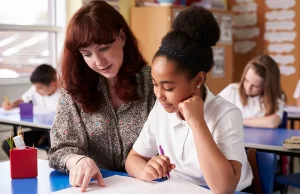
Education is a universal journey that transcends borders and cultures, providing individuals with the tools to navigate and contribute to the global landscape. This article explores the diverse perspectives that shape education on a global scale, emphasizing the shared goals and unique challenges faced by learners and educators worldwide.
**1. **Diversity in Educational Systems:**
*Overview:* Across the globe, educational systems vary significantly, reflecting cultural, historical, and societal differences. From the structured curriculum of East Asian nations to the more flexible models in Western countries, each system contributes to the rich tapestry of global education, offering unique approaches to learning and skill development.
**2. **Cultural Influences on Learning:**
*Overview:* Culture profoundly influences the way individuals approach education. The emphasis on rote memorization in some Asian cultures contrasts with the emphasis on critical thinking and creativity in the West. Understanding and respecting these cultural nuances is essential for fostering inclusive and effective learning environments.
**3. **Challenges of Access and Equity:**
*Overview:* Despite the global importance of education, challenges related to access and equity persist. Disparities in educational opportunities exist within and between countries, with marginalized communities often facing barriers such as lack of infrastructure, gender bias, and economic constraints. Bridging these gaps is crucial for achieving global educational goals.
**4. **Emergence of International Education:**
*Overview:* International education has become increasingly prevalent, with students seeking diverse learning experiences beyond their home countries. Studying abroad fosters cross-cultural understanding, promotes language proficiency, and exposes learners to varied perspectives, contributing to a more interconnected global society.
**5. **Technology as a Catalyst:**
*Overview:* Technology has emerged as a transformative force in global education. Digital platforms, online courses, and collaborative tools connect learners and educators worldwide. The integration of technology addresses geographical barriers, providing access to educational resources and fostering a global community of learners.
**6. **Language as a Bridge:**
*Overview:* Language serves as a bridge in global education, enabling communication and collaboration across borders. English often functions as a global lingua franca in academic and professional contexts, but the emphasis on multilingualism is gaining traction, promoting inclusivity and cultural exchange.
**7. **Sustainable Education Practices:**
*Overview:* The concept of sustainable education goes beyond environmental considerations. It encompasses equitable access to quality education, cultural preservation, and the development of skills that empower individuals to contribute meaningfully to sustainable development goals on a global scale.
**8. **Global Challenges, Local Solutions:**
*Overview:* Global challenges, such as climate change, pandemics, and social inequality, necessitate collaborative solutions rooted in education. Cross-border initiatives, joint research endeavors, and shared educational resources empower learners to address complex global issues with a sense of collective responsibility.
**9. **Skills for the Global Workforce:**
*Overview:* As the global workforce evolves, so do the skills required for success. Beyond academic knowledge, a focus on critical thinking, adaptability, intercultural competence, and digital literacy equips learners to thrive in a dynamic and interconnected global economy.
**10. **The Future of Global Education:**
*Overview:* The future of global education lies in fostering a collective commitment to learning, understanding, and collaboration. Embracing diversity, promoting inclusivity, and leveraging technology as an enabler will be essential in preparing learners for the opportunities and challenges of an ever-evolving global landscape.
**Conclusion:**
In the mosaic of global education, each perspective contributes to the collective narrative of human learning and development. By embracing the diversity of educational systems, acknowledging cultural influences, and addressing challenges collaboratively, the global community can pave the way for a more inclusive, interconnected, and impactful future in education.







